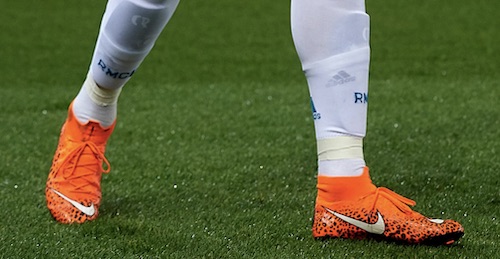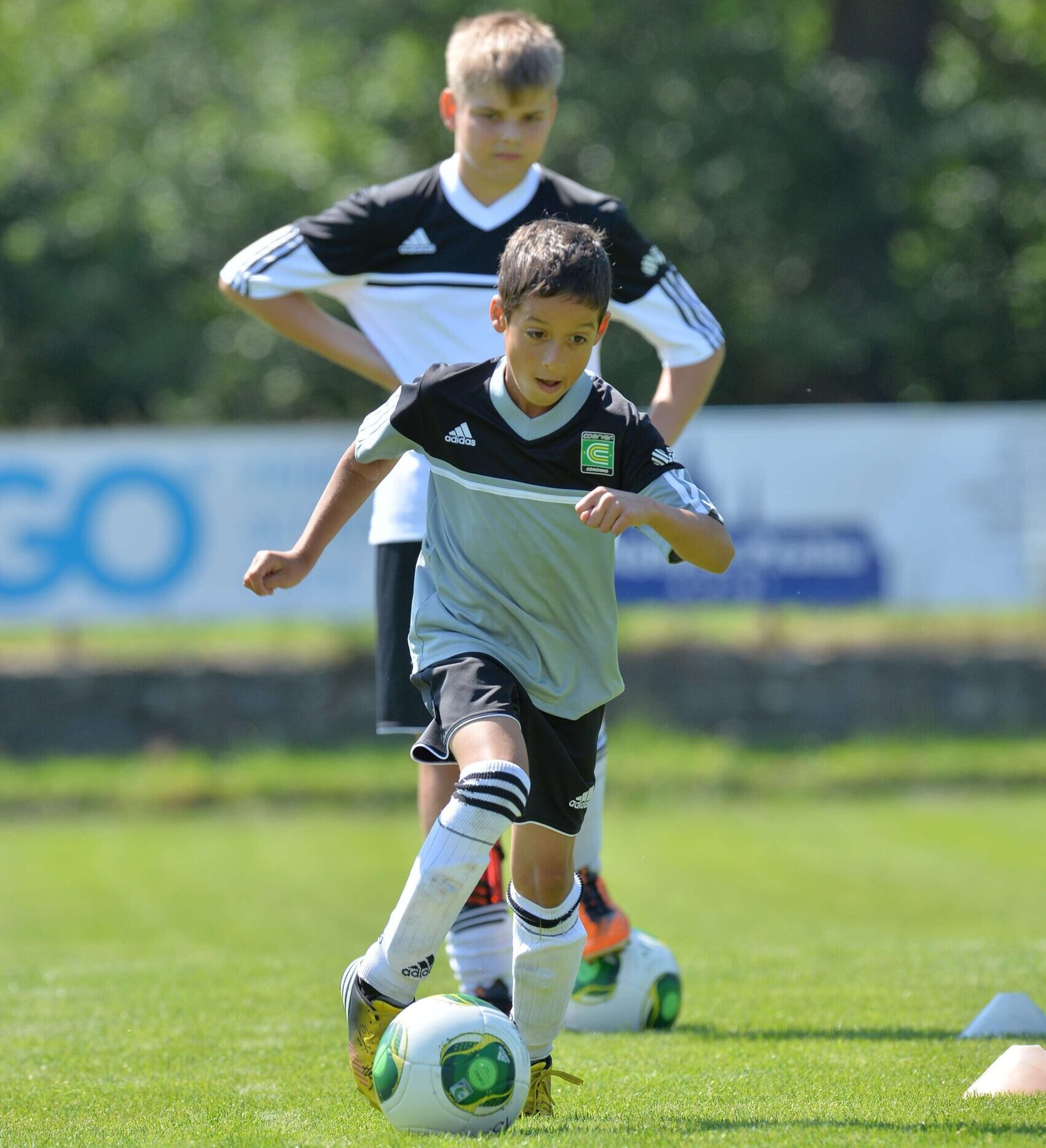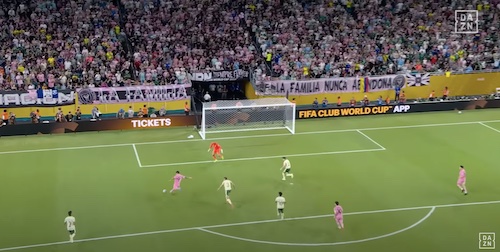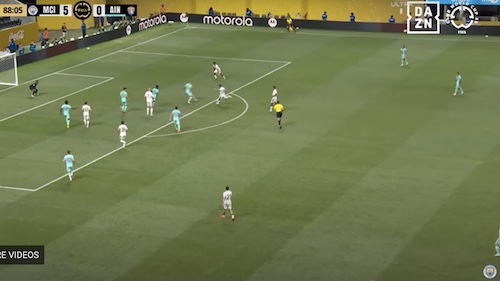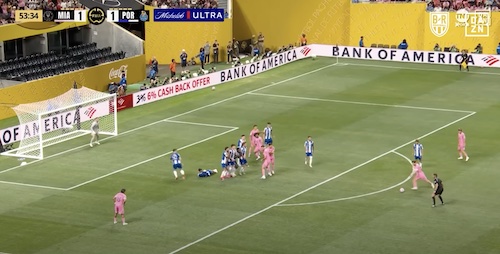Soccer shin guards: How do you wear your shin guards? How high to you pull your socks up? These almost seem like silly questions to ask a serious soccer player, but they’re actually important questions to ask since they can impact how you play the game of soccer. If you’re not comfortable with how your socks or shin guards feel when you play, it can hurt your overall performance.
Credit goes to @SoccerBible for the image above of Cristiano Ronaldo’s shin guards.
Choosing the right shin guard can be a hard and confusing process. In this video, Cole and Joanna break down all the different types of shin guards and which players they best fit. If you have any questions, feel free to leave them below and we will answer them.
Some top level soccer players pull their socks all the way up to their knees, see Thierry Henry, John Terry, Clint Dempsey and Neymar. Others try to emulate the style of the great Michele Platini and other famous old timers, who wore their long hair, their shorts tight, and had their socks pushed down to their ankles, shin guards were often absent then.
Those were the days when shin guards weren’t required in soccer, now they’re mandatory for good reason – you’re likely to suffer a painful kick to the shin if you’re not wearing protection. Since the 1990s shin guards have been mandatory in the English Premier League. Hard to believe there was a time when they weren’t. Again, it’s not worth the risk to not wear shin guards – who wants to risk suffering a broken shin bone.
But in the past shin guards were just a few sheets of newspaper or pieces of wood inserted into the socks. Thankfully, there have been improvements, and most shin guards are a combination of shock-resistant polypropylene, foam, and plastic. The shin guards today are both light and strong, able to withstand a tough tackle but not make you feel like you’re wearing ankle weights.
Some shin guards come with a lower ankle pad or detachable ankle sock. Many players don’t even use this portion of the shin guard. It’s uncomfortable, restricting, and doesn’t give you much protection anyways. This ankle sock seems to just soak up sweat.
Soccer Shin Guards
In a lot of cases the shin guard doesn’t protect you when you’re the recipient of a tackle. The shin guard is more mental in a way than actual armour or protection. This is because tackles come in at all angles, and many times down around the ankles, and at times from behind and or strike you in the calf, where the shin guard is not.
But overall, if you suffer a straight tackle on the shin, without shin guards, you’ll risk a severe bruise or even a broken bone, so it’s certainly worth it to wear the shin guards. It’s pretty amazing really that shin guards weren’t required until the 1990s.
See how much tape Cristiano Ronaldo uses to keep his shin guards in place.
#bootspotting ft. @cristiano, @ericbailly24 & @francoeescobar. More here: https://t.co/WwgmDX4b5y pic.twitter.com/rgSDuz2Upr
— SoccerBible (@SoccerBible) March 13, 2018
Soccer Shin Guard Suggestions
- Have a velcro strap on top and maybe the bottom
- Make sure they are strong, and can withstand a hard tackle
- Light, not too heavy or bulky but still solid
- Skip using the ankle sock, it’s too uncomfortable
However, one of the problems with shin guards is they always come loose or slid down the leg and push up against the front part of the foot and ankle. It’s hard to play with a shin guard that keeps moving around. A player has to constantly stop and pull up his or her socks and adjust the shin guard.
To counter act this, a lot of players use tape around the bottom of the shin guard. And nowadays, most shin guards have a velcro strap at the top but no strap at the bottom, and even if there are straps, they’re not tight enough. That’s why a few bands of tape around the bottom of the guard will keep it in place and keep it from sliding around—and then at half time you can add new tape if needed. Your team’s trainer should have a good supply of this tape for tapping ankles or other injuries.
If you’re training on your own, with a few friends let’s say, then not wearing your shin guards is probably ok, but when the intensity picks up in a practice, it’s worthwhile to put your guards on. You have to wear them in the game, so why not wear them in practice and get used to playing with them.
Maybe you buy a pair of shin guards that fit tight for practice, with straps or a even a sock like sleeve, and then a smaller or lighter pair for games that you can hold in place with tape. It’s understandable that sometimes you don’t want to wear them. Shin guards are constricting at sometimes, although it beats seriously injuring your shin and missing out on a game if you don’t have them on.
How Small Are Your Shin Guards?
The thing is though, soccer players who play at a high level know when and how to tackle a player and when to get in that extra to make a statement or get someone back with a hard challenge. Yet, there are accidents and moments in the game when players lose control or there’s a misguided tackle, whether intentional or not, it becomes much more dangerous, that’s why it makes sense to wear shin guards.
Many football players wear small shin guards or socks which are pulled down. Memphis Depay and Paulo Dybala are the most well-known. But they aren’t the only ones! Discover the other 11 players who wear or have worn small shin guards or their socks low down.











